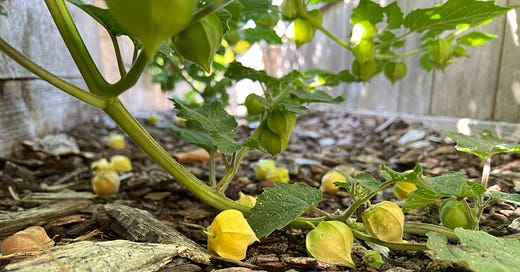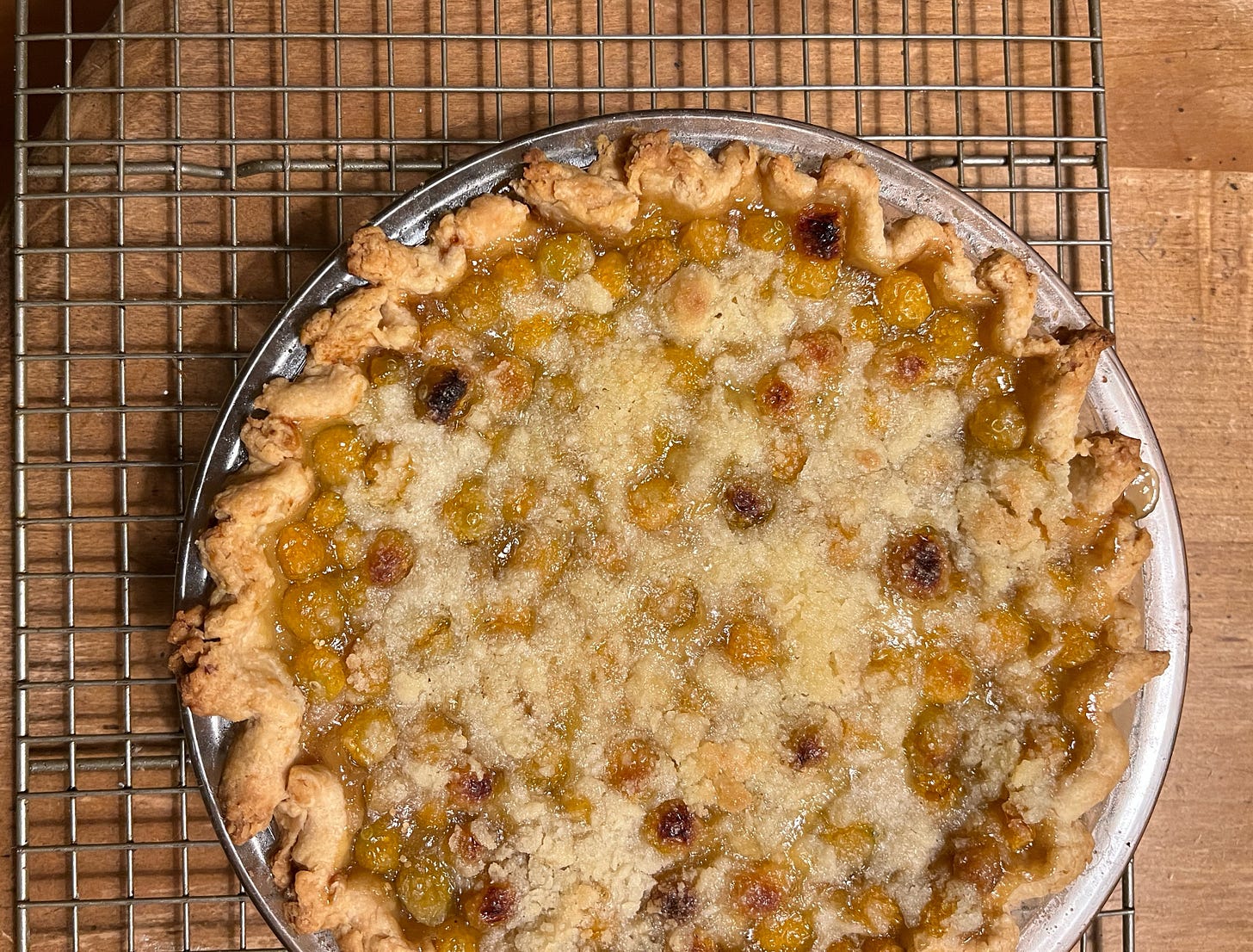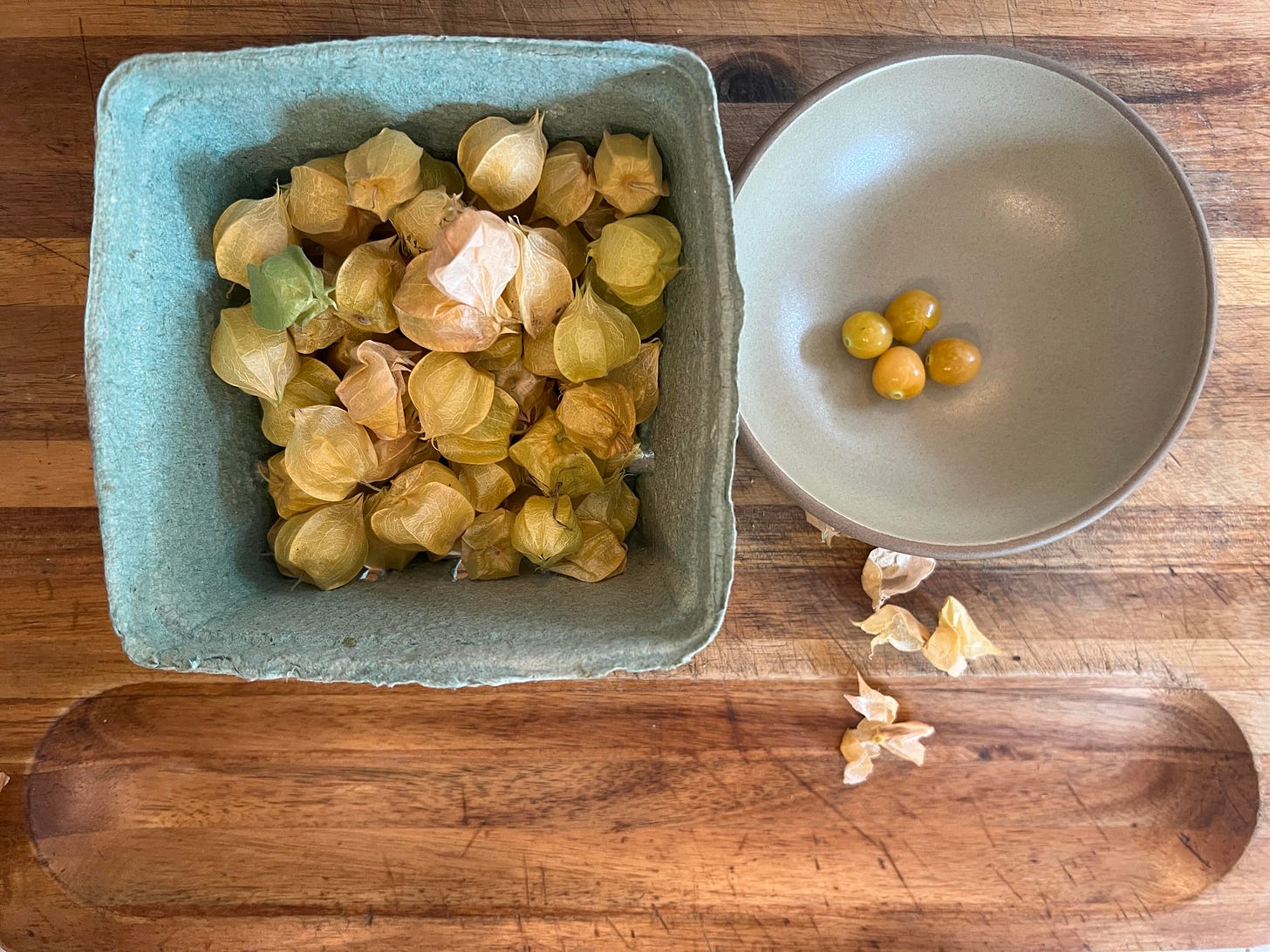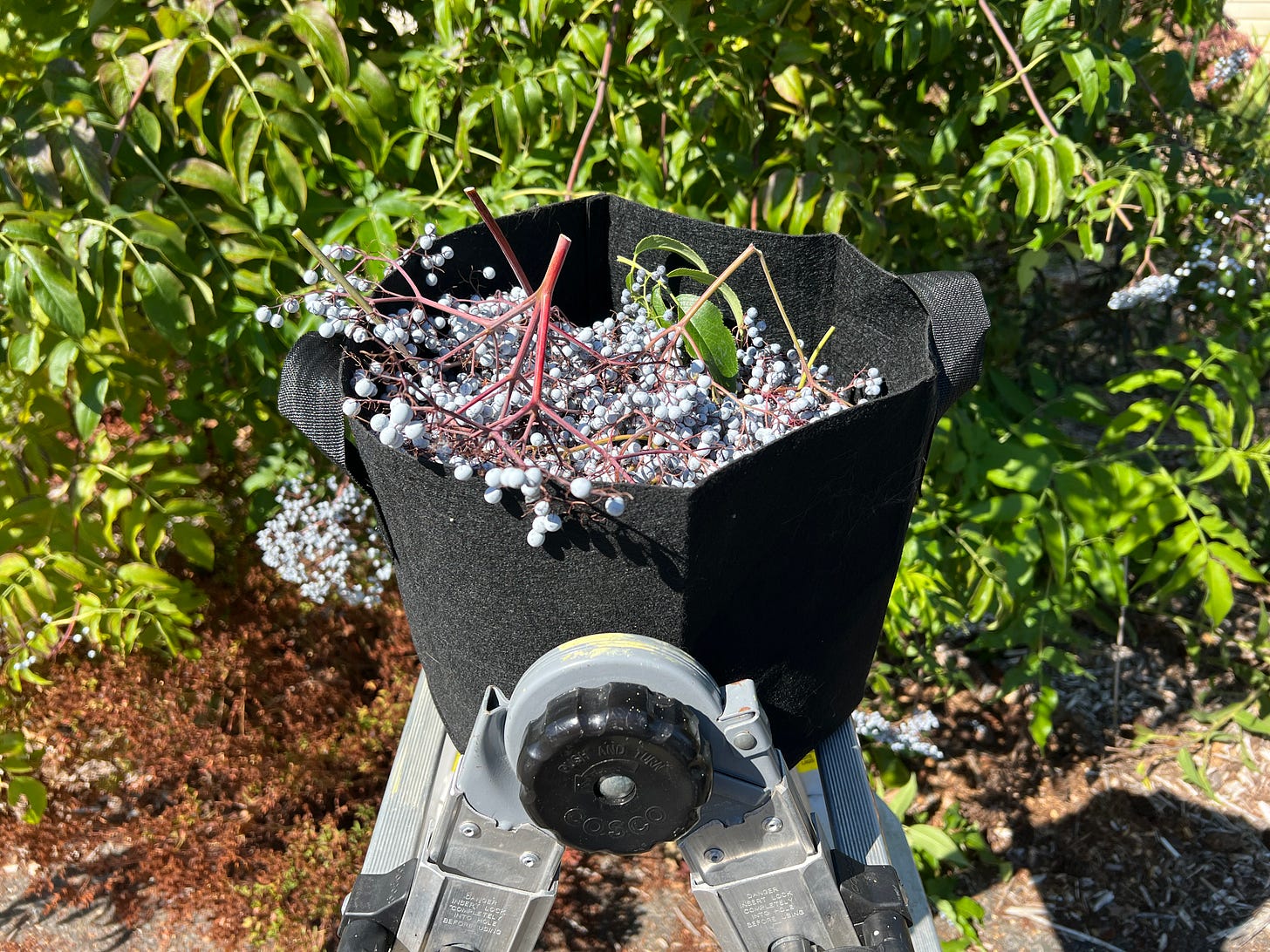Waiting on the longest harvest
The value of patience and a big freezer when it comes to berries
For the past month, I have walked outside every morning to gather ground cherries from the garden. By the time you read this, I may finally have enough to make a pie.
If you haven't eaten ground cherries, you may have seen them in seed catalogs, sometimes under the names "Cape gooseberries," "poha," or "physalis." Like tomatillos, which belong to the same genus, ground cherries are nightshades that sprawl across the garden, draping themselves across everything you've thoughtlessly planted next to them. Like tomatillos, too, each gold-green berry grows inside a ridged papery calyx, though ground cherries never swell big enough to split the seams of their casing. Most people who have tried a ground cherry at a farmers' market or restaurant have noted the similarities in their flavors. Most people have eaten a few and shrugged. That's because most people have only eaten them raw. We Mennonite and Amish folks eat them in pie.
When I lived in Seattle 15 years ago, I stumbled across ground cherries at a farmers' market stand and flashed back to a memory of a ground cherry pie my mother once baked in homage to her own childhood nostalgia. To a bland-food child who believed the three food groups were bread, rice, and bacon, the fruits’ jaundiced, tennis-ball color was alarming, though I remember enjoying the taste. At that Seattle market, I bought a pound of the cherries to play with, spent a half-hour dehusking the fruits, and found a recipe in the Mennonite Cookbook, a single-crust pie with no spices and a simple Dutch crumb topping. The flavor was astonishing: A little like a mai tai made with dark rum, buttery and caramel-sweet rather than tart. I called my mother to crow about my market find. She couldn't remember ever baking ground cherry pie at home.
Every summer after that Seattle rediscovery, I snagged any ground cherries I spotted in markets. Every year, they grew more expensive. In Portland, only one farmers market vendor currently sells ground cherries by the half-pint, and it costs $30 to buy a pie’s worth of peeled cherries, and half of the fruit inside the husks is split or rotted. So three years ago, I pledged to cultivate my own. Because, as one seed company warns, the plants are “feral,” dropping so much fruit that they return as volunteers year after year, I've dedicated the entire garden box to ground cherries. (They don’t germinate until early summer, so I do plant a crop of arugula there in the early spring.)
Growing my own plants has demonstrated me why farmers’ market ground cherries are expensive and dirty. As soon as the husked berries ripen, they pop off the undersides of the leaves and drop to the ground. Hunting for berries is a little like gathering fresh eggs: gently lifting up the low canopy of leaves, reaching into the gaps, fumbling around for the berries that have dropped. Instead of risking chicken protests and beak-stabs, I occasionally feel my way into a spiderweb.
Each morning I bring in a half-cup of husked berries to dry and finish ripening. And every day I peel yesterday’s batch, yielding a quarter-cup of ripe fruit. The only way that this painstaking, patient accumulation nets me enough ripe fruit to cook is if I bank each tiny harvest in the freezer, making new deposits to the account every day.
I came of age at the peak of Alice Waters’ influence, where it couldn’t be delicious if it wasn’t fresh, and it couldn’t be fresh if it wasn’t local. The first year, it felt like a betrayal of my own principles to grow my own fruit and only eat it frozen. But ground cherries —at least in the quantities I cultivate — don’t give a whiff about my ideals. They produce fruit at their own pace. It ripens when it will. Ground cherries may be my favorite pie fruit, perhaps because of their scarcity. So I wait patiently as my stash grows closer and closer in volume to the five cups I’ll need for pie.
Because of the lessons we’ve learned from this long harvest, our basement chest freezer has become the destination for any berry we can't eat out of hand. This year, we filed away all the micro harvests from the Kauffman-Rummell Library of Unusual Berries, including four honeyberries and something like a dozen blackcap raspberries. After spending an afternoon with a friend picking Himalayan blackberries in the dog park last month, I realized I wasn't going to have a chance to cook them fresh, so I boiled the blackberries down to juice, strained it, and stuck it away in the freezer, too.
After a neighbor who came across this newsletter reached out to see if I wanted the blue elderberries from her 10-foot shrub, I picked and boiled down 12 cups of the tiny, yeast-rimed berries. Some of it will end up as syrup, I think. But the elderberries finally triggered my plans to combine all my banked berries to make a summer 2024 jelly. Something that mixed the found and the cultivated, the gardened and foraged and gleaned, all the ways I have eaten the neighborhood this year.
It’s not the most amazing jelly I’ve ever made, in truth, but blending the fruits smoothed over the acidity of the jostaberries, dampened some of the elderberries’ muskiness, and lifted up the flat dark sweetness of the blackberries. The other additions are more symbolic than impactful. Perhaps it’s enough just to know that all the 2024 berries are in there, and that the combined flavor of the jelly is as unrepeatable as it was unplanned.









You describe so beautifully how we also gather ground cherries, one by one from the ground, and add them to a growing bag in our freezer. I didn't know they would ripen a bit on the counter. I will try that. My pie experience is a little different from yours----I make several very small pies for two (we hardly ever share ground cherry pie) and use heavy cream along with brown sugar as my ingredient list. No crumb topping although I'm up to trying it. Love all your berries, Jon! so many are new to me.
Love the idea of blending the whole vintage.